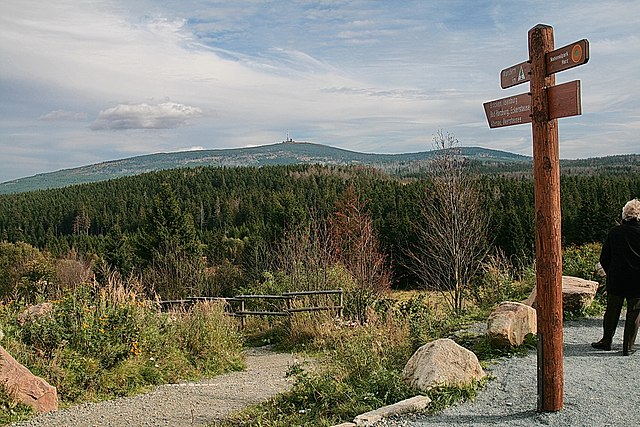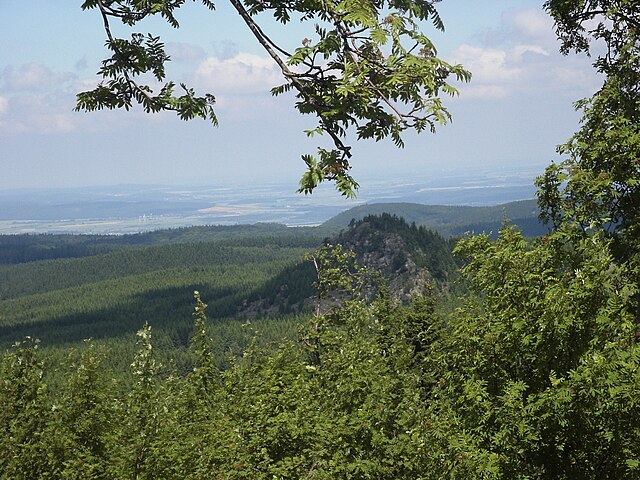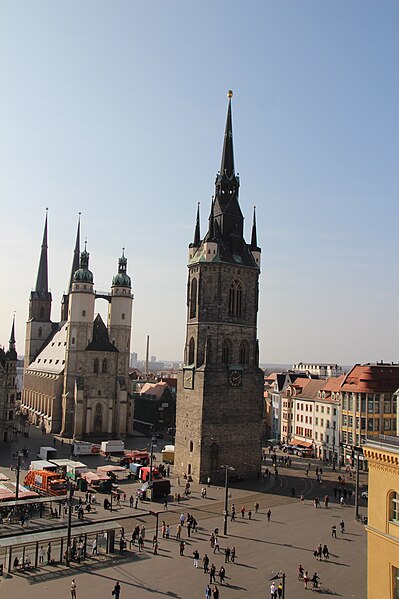Harz National Park is a nature reserve in the German federal states of Lower Saxony and Saxony-Anhalt. It comprises portions of the western Harz mountain range, extending from Herzberg and Bad Lauterberg at the southern edge to Bad Harzburg and Ilsenburg on the northern slopes. 95% of the area is covered with forests, mainly with spruce and beech woods, including several bogs, granite rocks and creeks. The park is part of the Natura 2000 network of the European Union.
View from the Brocken summit
View from Torfhaus to the Brocken
View of the Scharfenstein
Lynx Stone of 1818
Saxony-Anhalt is a state of Germany, bordering the states of Brandenburg, Saxony, Thuringia and Lower Saxony. It covers an area of 20,451.7 square kilometres (7,896.4 sq mi)
and has a population of 2.17 million inhabitants, making it the 8th-largest state in Germany by area and the 11th-largest by population. Its capital is Magdeburg and its largest city is Halle (Saale).
Aerial view to the city centre of Magdeburg, Saxony-Anhalt's capital city
Saxony-Anhalt's most populous city, Halle (Saale), is the seat of the state's largest university.
Wittenberg was once one of the most important cities in Germany, especially for its close connection with Martin Luther.
Halle is the largest city in Saxony-Anhalt.








